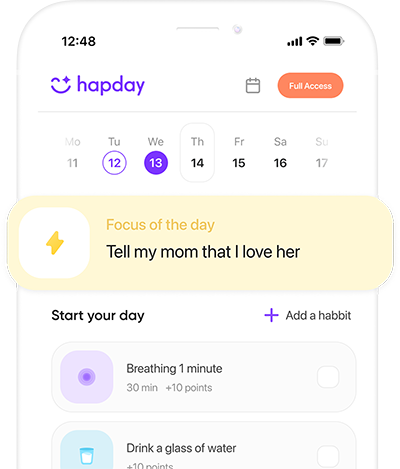- What is PTSD?
- What is Anxiety?
- Understanding the Link Between PTSD and Anxiety
- Coping Strategies for PTSD and Anxiety
- Understanding Triggers and Developing Coping Mechanisms
- Conclusion
What is PTSD?
Post-Traumatic Stress Disorder, or PTSD, often rears its head after a person experiences or witnesses a traumatic event. Originally identified in war veterans, it can affect anyone who has faced a terrifying ordeal—be it an accident, natural disaster, or any life-threatening situation. Symptoms can vary but often include:
- Intrusive Thoughts: Unwanted memories or flashbacks that pop up without warning.
- Avoidance: Steering clear of anything that might remind you of the trauma.
- Mood Changes: Feeling overwhelmingly negative about oneself or the world.
- Heightened Arousal: Being on edge, struggling to sleep, or having sudden outbursts of anger.
What is Anxiety?
Anxiety goes beyond temporary worry or fear. For those with an anxiety disorder, these feelings are persistent and can worsen over time, affecting everyday activities such as work, school, and relationships. Anxiety takes many forms, including:
- Generalized Anxiety Disorder (GAD): Chronic worrying about various aspects of life.
- Panic Disorder: Sudden, intense bouts of panic or fear.
- Social Anxiety Disorder: Overwhelming fear in social situations.
- Specific Phobias: Intense fear of specific things or situations.
Understanding the Link Between PTSD and Anxiety
It’s not uncommon for PTSD and anxiety disorders to occur together. In fact, research suggests that more than half of those diagnosed with PTSD also meet the criteria for at least one anxiety disorder. Both are tied to changes in the brain, including heightened activity in the amygdala (our threat detection center) and imbalances in neurotransmitters like serotonin.
Coping Strategies for PTSD and Anxiety
Dealing with PTSD and anxiety isn’t easy, but there are many effective coping strategies that can help manage symptoms and improve quality of life.
1. Cognitive Behavioral Therapy (CBT)
CBT is a proven approach for treating both PTSD and anxiety. This therapy helps people identify and change unhelpful thought patterns and behaviors. For PTSD, techniques such as Cognitive Processing Therapy (CPT) and Prolonged Exposure Therapy can be particularly beneficial. For anxiety, thought records and behavioral activation are often employed.
2. Medication
For some, medication can be a crucial part of treatment. SSRIs and SNRIs are commonly prescribed to help balance brain chemistry and ease symptoms. Always discuss with a healthcare provider to find the best option for you.
3. Mindfulness and Relaxation Techniques
Practicing mindfulness—through meditation, yoga, or simple deep breathing—can significantly reduce stress and anxiety. Even an eight-week mindfulness program has been shown to lower anxiety levels.
4. EMDR (Eye Movement Desensitization and Reprocessing)
This specialized therapy for PTSD involves processing traumatic memories through guided eye movements. EMDR has gained recognition for reducing the emotional impact and vividness of traumatic memories.
5. Lifestyle Changes
Simple adjustments can have a big impact:
- Exercise: Regular physical activity can alleviate symptoms of depression and anxiety.
- Sleep: Establishing a good sleep routine can improve mental health.
- Nutrition: Eating a balanced diet rich in omega-3s can support brain health.
- Limit Alcohol and Caffeine: Reducing these can help calm anxiety.
6. Building a Support Network
Having a strong support system is invaluable. Connecting with family, friends, or support groups provides emotional support and lessens feelings of isolation.
7. Journaling
Expressive writing is a fantastic outlet for processing emotions and thoughts. Journaling can help reduce anxiety symptoms and provide clarity.
8. Professional Help
Therapists offer tailored strategies and emotional support. For severe cases, more intensive treatment options are available.
Understanding Triggers and Developing Coping Mechanisms
Identifying what triggers PTSD and anxiety is crucial. Triggers might be sensory—like a certain smell or sound—or stress-related. Developing coping mechanisms, such as grounding techniques and distraction activities, can empower individuals to control their responses.
Conclusion
PTSD and anxiety present challenges, but with the right strategies, it’s possible to manage symptoms and lead a fulfilling life. Whether through therapy, lifestyle changes, or building a support network, remember: recovery is a personal journey, and seeking help is a strong and courageous step forward.


This article does an excellent job of explaining PTSD and anxiety in a clear and relatable way. I appreciate the practical coping strategies provided; they offer hope for those struggling. It’s refreshing to see mental health topics being discussed so openly. Thank you for shedding light on such important issues.
While I acknowledge the importance of discussing PTSD and anxiety, this article feels like just another generic overview. It lacks depth and personal stories that could make it more impactful. Many readers may find it unhelpful because it doesn’t delve into the real struggles people face. More insight is needed.
Exactly! It seems like a checklist rather than a meaningful exploration of the topic. Articles like this can give the impression that mental health issues are easily solvable when they often require much more nuanced approaches.
Right? I was hoping for something deeper, but all I got was surface-level information. Maybe next time they could include some personal anecdotes or case studies.
The connection between PTSD and anxiety is often overlooked, yet it’s crucial to understand how these two conditions interact. This article does a commendable job at outlining that link and highlighting effective coping strategies, especially cognitive behavioral therapy and EMDR, which are essential tools in treatment.
(…) CBT has proven results in treating these conditions; however, incorporating more recent research findings could enhance this discussion further.
(…) It’s vital to continue raising awareness about such topics to destigmatize seeking help.
(…) One thing that stands out is how straightforward this article is, but it could do with some humor here and there! Mental health doesn’t always have to be so serious—sometimes a little laughter can be part of healing too!
This article really opened my eyes to the connection between PTSD and anxiety. I had no idea that so many people experience both conditions simultaneously. It’s comforting to know that effective coping strategies exist, like CBT and mindfulness techniques. Thank you for sharing this information—it makes it feel less overwhelming!
I agree! Understanding the link between PTSD and anxiety is so important. It seems like there’s still a lot of stigma around mental health, but articles like this help educate others. Do you think more awareness could lead to better support systems?
I loved reading about EMDR—it’s fascinating how therapy can change the way we process trauma! Has anyone tried it? I’m curious about personal experiences.
While the strategies mentioned are helpful, it’s frustrating that not everyone has access to mental health resources. It feels like we need more support from our communities and governments to truly tackle PTSD and anxiety effectively.
You’re right! Access can be a major barrier for many people seeking help. Advocacy for mental health resources is crucial, especially in underserved areas.
‘Building a Support Network’ really resonated with me! I found that just talking to friends about my experiences with anxiety made a huge difference in how I cope daily. It’s amazing how much lighter you feel when you share your struggles.
‘Absolutely! Opening up can be daunting but so rewarding! Have you considered joining a support group? Sometimes connecting with those who truly understand can be even more impactful.’
‘I totally get what you mean! Having friends who listen without judgment makes such a difference in feeling supported during tough times.’
‘It’s interesting how lifestyle changes can significantly affect mental health—like exercise and nutrition! Sometimes we overlook these simple things when dealing with complex issues like PTSD and anxiety.’
Exactly! A walk outside or just eating well can lift your mood unexpectedly!
I appreciate how this article emphasizes mindfulness techniques as coping strategies for PTSD and anxiety! I’ve started meditating recently, and even just ten minutes of deep breathing helps reduce my stress levels immensely!
That’s great to hear! Meditation has transformed my approach to stress too—it’s all about consistency, right?